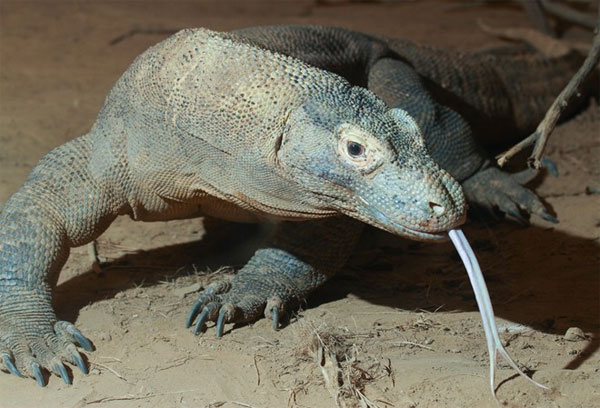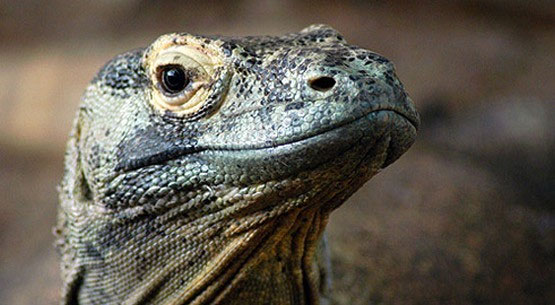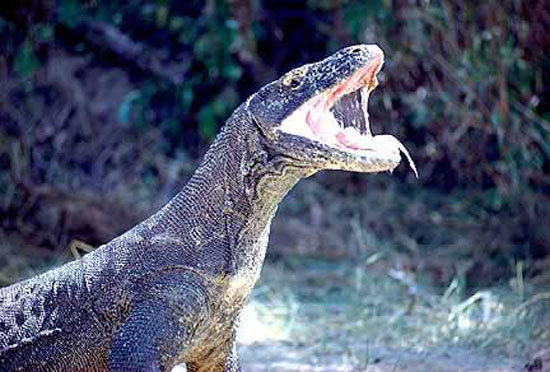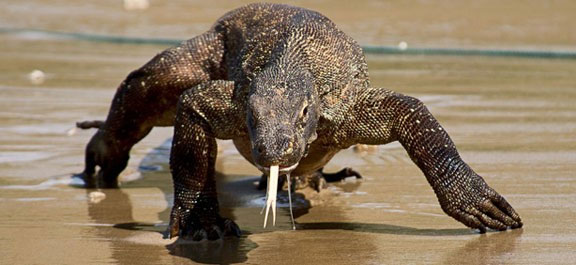Komodo dragon, prehistoric monster about to be extinct
The world's largest lizard species has them close to dinosaurs that are facing extinction because of gender imbalance and narrow living conditions.
>>>Video: Daredevil lures evil Komodo dragons to race

Komodo dragons live on several Indonesian islands.Mature individual lengths can reach 2 to 3 meters.They are the largest lizard species that exist on Earth and belong to the Vedic family.(Photos: Wikipedia)

Komodo, an Indonesian island, is home to the largest number of Komodo dragons. With an area of 1,800km 2 , the island is part of Komodo National Park.Only about 2,000 people live on the island.People call giant lizards by the name of the island.(Photos: Wikipedia)

Scientists say the Komodo dragon has a family close to the dinosaurs, an extinct group of animals from tens of millions of years ago.Fossils of a species quite similar to Komodo dragons in Australia were discovered, but they are three to four times larger than the giant lizards that exist in Indonesia.(Photos: Wikipedia)

Komodo dragons are carnivores. They eat insects and even large animals like goats, pigs and wild buffalo. When hungry, they eat the same kind. The biggest threat of Komodo dragons is the larger species of the same species. (Photo: Burrad-Lucas.com)

They are extremely ferocious, cheeky and gluttonous animals.In many cases Komodo dragons attacked villages to kill cattle.They are even ready to attack and eat human flesh if given the opportunity.(Photo: National Geographic)

Extremely powerful jaws, sharp teeth and infected saliva are powerful weapons of Komodo dragons.A sharp sense of smell helps them follow their prey from a distance.Days after the prey dies, Komodo dragons will reach the decaying animal's body and eat.(Photo: National Geographic)

The flow of Komodo dragons often flows.Their saliva is toxic because it contains many dangerous bacteria.The bite will cause infection, potentially killing a buffalo for several days.In addition, their saliva also contains anticoagulants, causing the prey to bleed continuously and quickly burn out.(Photos: Wikipedia)

However, Komodo dragons have the ability to autoimmune with the same type bite.The superior immune system makes it easy to antibacterial and heal wounds.This is an important condition for Komodo dragons to not perish after their territorial or partner battles.(Photo: Flick)

Like other reptiles, Komodo dragons spawn.Thanks to the instinct of genetic assassination, Komodo dragons feed themselves and survive immediately after leaving the nest.They can run at speeds of 20km / h, 4.5m deep underwater and flexible climbing on trees or hills and mountains.(Photos: Wikipedia)

The natural selection process helps Komodo dragons to live in extremely harsh environments in arid volcanic islands.Currently, 3,500 Komodo dragons are living in Indonesa but only 350 are female dragons.Sex imbalance and the expansion of human habitat push this species to close to the risk of extinction.(Wikipedia photos)
- Video: Komodo dragon re-feeds the raw chicken
- Mysterious drama of Komodo dragon
- The magic of Komodo dragon blood
- Komodo dragons attack people again
- Video: 7 Komodo dragons rarely born in Indonesia
- Komodo dragons originate from Australia
- Video: Dragon komodo drama battle on Indonesian island
- Komodo blood dragon will be made into new antibiotics
- The giant 'monster' swallowed the monkey in an instant
- Dragon Island in Indonesia
- Tiger snakes fight Komodo dragons
- Amazing world of Komodo dragons
 Animal 'suffering' after hibernation
Animal 'suffering' after hibernation Why do goats climb well?
Why do goats climb well? Scientists were surprised to see chimpanzees eating turtles
Scientists were surprised to see chimpanzees eating turtles Giant catfish died deadly due to drought in Thailand
Giant catfish died deadly due to drought in Thailand